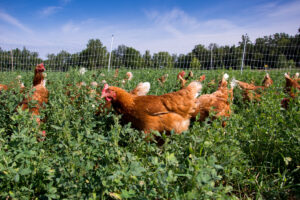Are you a bipedal primate with a complex brain? If you can read this, then the answer is yes!
Congratulations— you are a hominid, and one of the great apes. If you’re curious about how you came to be, then the best way to learn is by digging into the science of evolution. Evolution is a vast and sprawling subject, but it becomes more manageable when you limit it to one species, particularly your own.
We’ve compiled eight of the best books about human evolution for anyone who’s curious about our species’ journey. We’ll list them in order of complexity so you have a wide selection of material.
Once you start learning, you might find that your curiosity deepens. So, you could benefit from reading more than one of the books on this list. Let’s take a look!
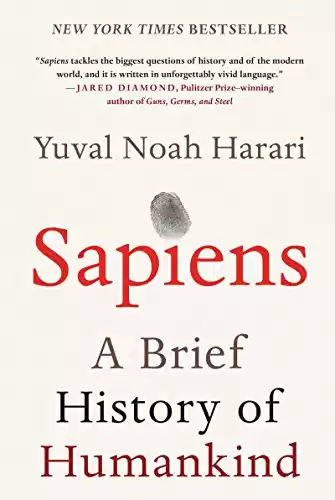 Check Amazon
Check Amazon- 464 pages.
- Looks at the past and future of humanity.
- Features 27 photographs, six maps, and 25 illustrations.
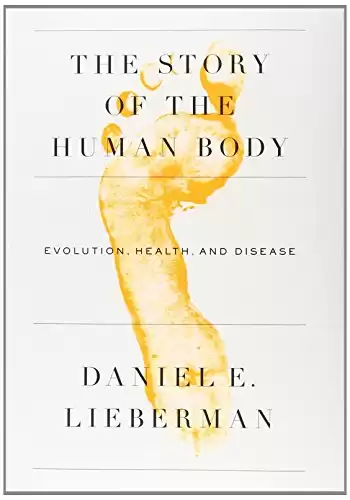 Check Amazon
Check Amazon- 480 pages.
- Details how the human body has evolved over time.
- Written by Daniel Lieberman, chair of the department of human evolutionary biology at Harvard University.
 Check Amazon
Check Amazon- 160 pages.
- Learn precisely what scientists know about human evolution.
- Succinct treatment of the topic of evolution.
- Great starting point for readers wanting to learn more about evolution.
 Check Amazon
Check Amazon- 256 pages.
- Written by Dr. Alice Roberts, a researcher of human origins.
- A DK publication.
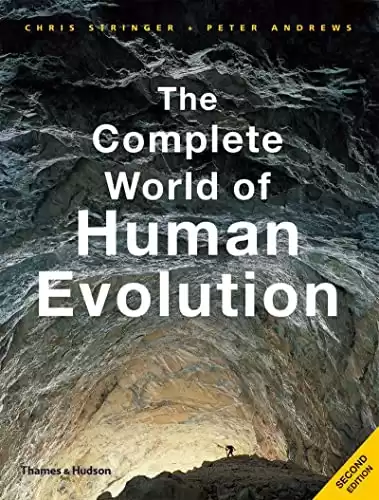 Check Amazon
Check Amazon- 240 pages.
- Illustrated with 180 color and 252 black-and-white photographs.
- Originally published in 2005, this revised edition was published in 2012.
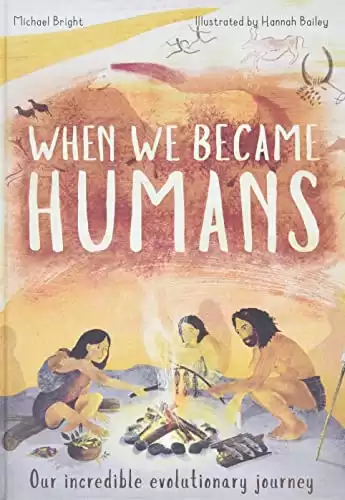 Check Amazon
Check Amazon- 64 pages
- Recommended for children ages 7 through 11
- Details key aspects of the early human story
- A well-researched and thought-provoking book
- Explains complex concepts in a way that is accessible to a lay audience
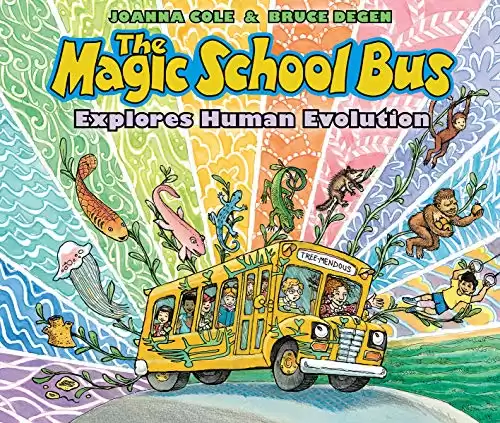 Check Amazon
Check Amazon- 56 pages.
- Recommended for children ages 4 through 8.
- Part of the classic Magic School Bus series.
A-Z-Animals’ Top Picks for the Best Books About Human Evolution
#1 Best Overall: Sapiens: A Brief History of Humankind by Yuval Noah Harari
Sapiens: A Brief History of Humankind is inarguably the most popular book in this list, and for good reason.
Instead of going too far back, this text runs only 70,000 years into the past — a time when humanity would have been very recognizable and living alongside dozens of other species who, for all intents and purposes, could have beaten us in our evolutionary struggle.
Sapiens takes a closer look at our most recent evolutions; primarily, the cultural and geographical forces that have shaped modern humanity. This is particularly important because some of our most recent evolutions have been among the most significant for our species’ future. Namely, agricultural, industrial, and technological evolutions are paramount to humanity’s current situation and imminent future.
This is a great text to use as a way to round out your understanding of human evolution, finishing by contemplating the question, what do we want our species to become? It can be the first or last book you ever read about human evolution, and you’ll get the same enrichment.
The book is available in Kindle and Audiobook formats and has more than 66,000 reviews on Amazon with a total rating of 4.6/5.
The book is an engaging feat of storytelling, allowing you to get a deep understanding of the concepts without really feeling like you’re reading a scientific text. It is 256 pages long, available in paperback, audiobook, illustrated hardcover, and Kindle formats, and has more than 132,000 reviews on Amazon.
The majority of negative reviews were from readers who object to the theory of evolution. These reviews are quite lengthy and we invite you to read them for yourself before deciding whether this book is right for you.
Pros and Cons of Sapiens: A Brief History of Humankind by Yuval Noah Harari
| Pros | Cons |
|---|---|
| This book starts only 70,000 years ago, when humans would have been recognizable and living alongside other species that, in theory, could have beaten us in our evolutionary struggle. | Some readers object to the theory of evolution. |
| It examines the cultural and geographical forces that shaped modern humanity. | |
| This text will help you round out your understanding of human evolution by asking, “What do we want our species to become?” | |
| It is written in an engaging manner that doesn’t “feel” like a scientific text. | |
| It’s available in paperback, audiobook, illustrated hardcover, and Kindle formats. |
- 464 pages.
- Looks at the past and future of humanity.
- Features 27 photographs, six maps, and 25 illustrations.
2. Your Inner Fish: A Journey into the 3.5-Billion-Year History of The Human Body by Neil Shubin
Neil Shubin is a professor of Anatomy at the University of Chicago and the author of numerous books concerning anatomy and biology.
Your Inner Fish takes a unique approach when exploring human evolution. Instead of fixating on our hominid origins, Shupin looks at our development in the context of the species that surround us. Namely, he looks at how closely we resemble fish in both our physical form and in the coding of our DNA.
Learn how our heads resemble extinct fish, how our hands are comparable to fins, and how our genes mirror those of microscopic organisms.
This book is available in the following formats: Kindle, audiobook, hardcover, paperback, and spiral-bound. It has a 4.6/5 rating with almost 2,500 reviews. Some readers felt that it was “boring.”
Pros and Cons of Your Inner Fish: A Journey into the 3.5-Billion-Year History of The Human Body by Neil Shubin
| Pros | Cons |
|---|---|
| This book was written by Neil Shubin, a professor of Anatomy at the University of Chicago. | Some reviewers said that this text was boring. |
| It examines how closely we resemble fish in physical form and in the coding of our DNA. | |
| For example, it explains how our hands are comparable to fins. | |
| It’s available in the following formats: Kindle, audiobook, hardcover, paperback, and spiral-bound. |
- 256 pages.
- Chosen by the National Academy of Sciences as the best book of 2009.
3. The Story of The Human Body: Evolution, Health, and Disease by Daniel Lieberman
Chair of Human Evolutionary Biology at Harvard, Daniel Liberman takes us on a hyper-informed journey through human evolution. Specifically, we look at human evolution’s masterpiece — the physical body.
Our current bodies are evidence of the environmental and individual paths humanity has traversed over millions of years. Further, The Story of The Human Body answers modern questions like “why is there more chronic disease now, even though we’re living longer than ever?”
Learn about our styles of locomotion, diet, hunting skills, athleticism, brain development, and cultural tendencies through the millennia. Those factors are the vehicles for change, and our bodies play key roles in each area. Each one of those things leaves its fingerprints on our bodies and our DNA.
The book has a 4.6-star rating on Amazon with over 1,300 reviews. It’s currently available in Audiobook, Kindle, hardcover, and illustrated paperback formats. Most critical reviews said that this book reads like it was written by an academic and is too technical.
Pros and Cons of The Story of The Human Body: Evolution, Health, and Disease by Daniel Lieberman
| Pros | Cons |
|---|---|
| This text was written by Daniel Liberman, Chair of Human Evolutionary Biology at Harvard. | Most critical reviews said that this book reads like it was written by an academic and is too technical. |
| It looks at human evolution through the physical body. | |
| It asks questions such as, “Why is there more chronic disease now, even though we’re living longer than ever? | |
| Learn about how the following have evolved during the millennia — our styles of locomotion, diet, hunting skills, athleticism, brain development, and cultural tendencies. | |
| It’s currently available in Audiobook, Kindle, hardcover, and illustrated paperback formats. |
- 480 pages.
- Details how the human body has evolved over time.
- Written by Daniel Lieberman, chair of the department of human evolutionary biology at Harvard University.
4. A Pocket History of Human Evolution: How We Became Sapiens by Silvana Condemi and François Savatier
A Pocket History of Human Evolution is a succinct look at the key points of human evolution. Written in 2019, it’s also incredibly modern and uses storytelling to incorporate scientific ideas with a narrative.
This book provides context for some of the new discoveries that have been made about our species. For example, recent discoveries in Australia have shifted back our estimates of human migration and behavioral modernity. Writers Silvana Condemi and François Savatier explore answers to why our species was so successful in the grand scheme of life.
Expect to uncover answers about brain size, bipedalism, culture, language, and much more. This book will give you relatable and recitable knowledge that you can incorporate into your daily conversations.
The text is only 160-pages long, but it covers a great deal of information. It’s available in Kindle, audiobook, and paperback formats and has a 4.5 rating on Amazon. One reviewer said that the writing was “cumbersome in some places.” And a couple of reviewers said that the material was unsubstantiated, superficial and speculative.
Pros and Cons of A Pocket History of Human Evolution: How We Became Sapiens by Silvana Condemi and François Savatier
| Pros | Cons |
|---|---|
| This book explains why humans have been so successful from an evolutionary standpoint. | One reviewer said that the writing was “cumbersome in some places.” |
| You’ll learn how evolution impaced brain size, bipedalism, culture, language, and more. | And a couple of reviewers said that the material was unsubstantiated, superficial and speculative. |
| This brief book is only 160-pages long, but it contains a great deal of information. | |
| It’s available in Kindle, audiobook, and paperback formats. |
- 160 pages.
- Learn precisely what scientists know about human evolution.
- Succinct treatment of the topic of evolution.
- Great starting point for readers wanting to learn more about evolution.
5. Evolution: The Human Story by Dr. Alice Roberts
Spanning 256 pages, this story goes back to cover eight million years of our history. It doesn’t cover the time before we were primates, but that allows the book to go into deeper detail about Homo sapiens.
Illustrated by the Kennis brothers, two highly-regarded paleoartists, Evolution: The Human Story provides a visually rich history of our species’ development over the eons. You’ll see humanity through the microscope and telescope alike, examining the wide-scale progressions of the species alongside specific insights into behavior and the factors that influence it.
Look for the finely-crafted recreations and illustrations of humanity through time. The Kennis brothers are well-known for their art as well as their understanding of paleontology.
Evolution: The Human Story is available in Kindle and hardcover formats and has been given a 4.7/5-star rating on Amazon with 870 reviews. Several reviewers said that this book was difficult to read on the Kindle. A couple of readers said that they expected more scholarly writing.
Pros and Cons of Evolution: The Human Story by Dr. Alice Roberts
| Pros | Cons |
|---|---|
| This 256-page book covers eight million years of human history. | Several reviewers said that this book was difficult to read on the Kindle. |
| It’s illustrated by the Kennis brothers, two highly-regarded paleoartists. | A couple of readers said that they expected more scholarly writing. |
| The book covers wide-scale progressions of our species as well as insights into behavior and the factors that influence it. | |
| This title is available in Kindle and hardcover formats. |
- 256 pages.
- Written by Dr. Alice Roberts, a researcher of human origins.
- A DK publication.
6. The Complete World of Human Evolution by Chris Stringer and Peter Andrews
This book was originally published in 2005, but modern revisions include new and exciting advancements in our understanding of human evolution. Because scientists are always improving the understanding of our entire journey, it’s very important to get revised and updated books on the subject.
The Complete World of Human Evolution covers the extent of modern knowledge about human evolution. It even explores the speciation of our close cousins such as Neanderthals and dozens of other hominids. These were close competitors in the struggle for survival, and they might have been around more recently than you thought.
Learn the full story with the help of images, storytelling, scientific descriptions, and more. This book will give you a solid understanding of human evolution as it is currently understood. It comes equipped with 240 pages, 180 color illustrations, and is available in paperback and hardcover formats. One reader opined that the book is “not so complete, not so objective” because it doesn’t include points raised by the “multi-regionalist school” of human evolution.
Pros and Cons of The Complete World of Human Evolution by Chris Stringer and Peter Andrews
| Pros | Cons |
|---|---|
| This book, which was originally published in 2005, includes modern revisions that address advancements in our understanding of human evolution. | One reader opined that the book is “not so complete, not so objective” because it doesn’t include points raised by the “multi-regionalist school” of human evolution. |
| It explores the speciation of Neanderthals and other hominids that were close competitors in the struggle for survival. | |
| This text includes 180 color illustrations, images, storytelling, scientific descriptions, and more. | |
| It’s available in paperback and hardcover formats. |
- 240 pages.
- Illustrated with 180 color and 252 black-and-white photographs.
- Originally published in 2005, this revised edition was published in 2012.
7. When We Became Humans: Our Incredible Evolutionary Journey by Michael Bright (Author), Hannah Bailey (Illustrator)
When We Became Humans is a book written for seven- to 11-year-olds. Written by Michael Bright with lovely illustrations by Hannah Bailey, it visually and intellectually addresses the question — “Where did we come from?“
You’ll find close looks at the key moments in human evolution, from the minute we stood upright all the way through the agricultural revolution and domestication of dogs. This truly is an excellent primer for early adolescents with curious minds. The images included are valuable for young readers, especially beautiful graphics that complement the scientific ideas of human evolution.
It’s 64 pages long, highly reviewed on Amazon, and available in hardcover. One reviewer said that the illustrations were “stylized and childish” and that the text wasn’t written in a style that’s appropriate for children.
Pros and Cons of Our Incredible Evolutionary Journey by Michael Bright (Author), Hannah Bailey (Illustrator)
| Pros | Cons |
|---|---|
| This book was written for kid seven to 11 and features lovely illustrations. | It’s only available in hardcover format. |
| It answers the question “Where did we come from?” | One reviewer said that the illustrations were “stylized and childish” and that the text wasn’t written in a style that’s appropriate for children. |
| It chronicles the pivotal moments in human evolution, from standing upright to the agricultural revolution, to the domestication of dogs. |
- 64 pages
- Recommended for children ages 7 through 11
- Details key aspects of the early human story
- A well-researched and thought-provoking book
- Explains complex concepts in a way that is accessible to a lay audience
8. The Magic School Bus Explores Human Evolution by Joanna Cole (Author), Bruce Degen (Illustrator)
Written for four- to eight-year-olds, this Magic School Bus book is a classic children’s text on human evolution. It works through evolutionary processes without getting too technical. It’s also a familiar series that children might already trust and enjoy.
Honestly, these beginner’s books are great references for adults who need a refresher on the process as well.
Trek back through human evolution’s distant past, long before we had legs to walk on or lungs to breathe air. This book covers all of the primary stops along the way. You might not get into the deep science of evolution, but you’ll certainly get a primer on humanity’s basic journey through time.
This is a wonderful and exciting book for children, and you’ll surely have a great time reading it to them. The Magic School Bus Explores Human Evolution is available in hardcover, audiobook, and Kindle formats. This book has a rating of 4.9/5.
Pros and Cons of The Magic School Bus Explores Human Evolution by Joanna Cole (Author), Bruce Degen (Illustrator)
| Pros | Cons |
|---|---|
| This book was written for kids four to eight. | None |
| It walks kids through the evolutionary process without getting too technical. | |
| It’s available in hardcover, audiobook, and Kindle formats. |
- 56 pages.
- Recommended for children ages 4 through 8.
- Part of the classic Magic School Bus series.
How to Choose The Right Human Evolution Books for Yourself
It can be tough to choose when there are so many great options. A book is an investment of time, especially in our fast-paced world. So, our suggestion is to pick the book based on your level of experience and interest.
Adults should start with something like numbers 5 or 6 on our list. Books such as Evolution: The Human Story cover all of the fundamental ideas alongside excellent images to spark some wonder and deepen your understanding. Anyone could benefit from one of these texts because evolution is a vast concept, and few know everything there is to know about the fundamentals.
This is true even if you’re familiar with some of the basic concepts. As we work forward toward number 1 on our list, the books tend to become more specialized.
Human evolution is an interesting topic partly because every subject can be investigated at great lengths. For any specific interest you take in the subject of evolution, there are probably dozens of books that explore its nuances. So, a great method is to read a fundamental book on the subject, then find another book that explores one of the sub-categories that interests you most.
In many cases, the more specific the book, the more invested and passionate the author is about the subject.
So, when choosing, consider these three things:
- Your level of understanding
- Your human evolution-specific interests
- The complexity of the book
Always make sure the book is in line with your understanding of scientific language. Some human evolution books are written by evolutionary biologists for evolutionary biologists. While it feels good to pick up a lofty text on something, it’s often the case that those books don’t teach us that much.
We’re too caught in heady language and complex terms. A book that weaves scientific understanding and storytelling is usually the best bet when it comes to retaining the most information!
Thank you for reading! Have some feedback for us? Contact the AZ Animals editorial team.




